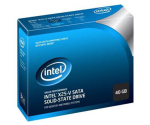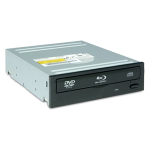System Buyers' Guide: PCs for Under $1000
by Sean Hollister on February 12, 2010 2:00 AM EST- Posted in
- Guides
Get Your Upgrades
In the preceding pages, we've explained how to build the most PC for the least money while maintaining our high standards for quality in each and every individual component. In places, we've also found ways you could optionally "get less," saving some money in exchange for features most want but you don't necessarily need. But what if you're satisfied with your build and have some extra money left over? Are there any moderate upgrades that are similarly worth every penny you'll spend? That is the question we'll attempt to address here, in our new Upgrades section. Simply scroll down to the heading that best suits your computing style and we'll suggest a part or three that you won't regret adding to your purchase.
The Multitasker
If you're a business user looking to improve your productivity, there are two basic ways to ensure that happens as you build a new PC. First, you can make sure your computer is as responsive and multithread capable as can be; and second, you can optionally get a larger monitor with a higher resolution, so you have plenty of desktop real estate to work with.
When it comes to multithreaded performance, there's little we can do for the Intel Entry-level PC; upgrading to a quad-core LGA 775 processor is currently cost-prohibitive enough that you should just go with the Core i3-530 in our mainstream configuration instead. But you can easily spend an extra $30 for the $102 Athlon II X4 630 if you need an extra core in our AMD Entry-level PC. Also, though it's not terribly cost effective, you can also get better single and multithreaded performance in our AMD Mainstream PC by purchasing the $140 Phenom II X4 940 or better.
 |
Meanwhile, if you want a responsive computer, we suggest that you look at the $130 Intel X25-V solid state drive. With a capacity of only 40GB and exceedingly slow sequential write times, the X25-V isn't a replacement for your rotational storage. But with superb read and random write times thanks to the same controller used on Intel's critically acclaimed X25-M G2, it will serve as a fabulous boot drive that will cut your Windows load times in half and speed up basic computing. Since sales seem to come and go on this drive, you might want to shop around; currently, you can find one at ZipZoomFly for $110 after rebate.
Finally, if you need a bigger screen at an affordable price point, ASUS continues to have you covered. For an entry-level PC, upgrading from the 19" ASUS VW193TR to the 21.5" 1080p VH226H is a no-brainer; but if you need a couple of extra inches, the ASUS VH236H ($170 after a $20 rebate) provides a highly rated 23" screen for just $20 more. And though we're not certain that it's worth the premium price, if you're looking for the increasingly rare large 16:10 panels, the ASUS VW266H provides a relatively inexpensive 25.5" 1920x1200 screen for $300.
The Gamer
While it's true that some games can be limited greatly by the power of your CPU, hardcore PC gamers know that for the most part, the true heart of a gaming PC is its graphics card. What that means is that, up to a certain point, you can pick a powerful GPU and get greatly increased graphical performance in even an entry-level Pentium Dual-Core system like the one on page 3.
 |
If you plan to run titles that aren't particularly strenuous or you don't mind running at reduced graphics settings, the same $100 Radeon HD 4850 we recommended for our Mainstream rigs will provide plenty of power to one of our 1440x900 entry-level PCs. If you need even more power, however, a $160 Radeon HD 5770 should be able to provide enough horsepower for 1920x1200 gaming—in addition to Eyefinity and DX11—with minimal bottlenecking. If you're considering an upgrade for one of our Mainstream configs, there's once again the Radeon HD 5770, the Radeon HD 4890 provides excellent 1920x1200 performance for $200, and the Radeon HD 5850 hits the ceiling of reality at $300. We can't really justify the price for cards more expensive than the 5850 due to diminishing returns, just as we can't currently justify buying any gaming cards from NVIDIA unless you need PhysX or 3D Vision. As of today, when it comes to gaming, ATI beats NVIDIA at every price point.
If you're serious about gaming, you might also want to pick up a dedicated gaming mouse as well. While most gamers can get along just fine with a budget keyboard, the precision and response time of a gaming mouse really does make a difference, and these days you can find very good ones for $30 if you wait for a sale. Though the exact mouse you pick will depend on your dominant hand and grip style, right-handers will find it hard to go wrong with the comfortable Logitech MX518 optical wheel mouse for $40.
The Multimedia Enthusiast
If you're a true multimedia enthusiast, you probably already have the expensive screen and sound system on-hand, and you're looking to us for a budget pseudo-HTPC capable of supporting it. Well, if you picked our Intel Mainstream PC or our AMD Entry-level PC, you're already most of the way there; you just need to trade up for an appropriately small case to house the system, wireless peripherals and a Blu-ray drive.
 |
For roughly the same price of the Centurion 5 case and ModXStream power supply in our standard configurations, you can pick up the $110 Antec New Solution NSK2480 instead, a popular, component-style steel HTPC case built in collaboration with the editor of SilentPCReview.com. Featuring a built-in 380W, 80 Plus-certified power supply, full-height expansion slots and a number of important tweaks for airflow and quiet operation, it's an excellent choice for the money.
 |
If you need a single drive that can read Blu-ray discs and burn DVDs, your best budget choice is the LG CH08LS10, a combo Blu-ray reader and 16X LightScribe-capable DVDRW for $100. If you only want to watch movies, you can pick up the Lite-On iHOS104-06, an internal SATA drive that reads Blu-ray, DVDs and CDs for a practically unheard of $60.
When it comes to cheap wireless peripherals, quality is always a mixed bag. The Logitech Cordless Desktop EX 100 hits all the important notes with a reasonably shrunk 102-key keyboard in a straightforward arrangement, an acceptable 1000dpi optical mouse with scroll wheel, RF connectivity and the low price of $31—only $10 more than our wired peripheral recommendation—for the pair. (Note that it's currently listed on sale at Target for just $20.)
As one last HTPC consideration, you might want to swap out your storage. For the same price as the WD Caviar Blue, you can get Western Digital's Caviar Green 500GB instead, which sacrifices the dedicated 7200RPM spindle speed of other drives for increased power savings and reduced noise—features that prove valuable in an HTPC hard drive.










86 Comments
View All Comments
mfenn - Friday, February 12, 2010 - link
I would like to point out that, while I am a fan of quiet GPUs, I think you were referring to separate GPUs on page 5.Check out:
http://dictionary.reference.com/browse/discreet">http://dictionary.reference.com/browse/discreet
vs.
http://dictionary.reference.com/browse/discrete">http://dictionary.reference.com/browse/discrete
SeanHollister - Friday, February 12, 2010 - link
You're absolutely right, and in this particular context, "discreet" is quite inaccurate, as both the discrete GPUs I'm referring to have a fan while the onboard IGPs are cooled by passive means.Thanks, and I'll see if we can take care of the typo in a future revision.
JarredWalton - Friday, February 12, 2010 - link
Fixed. I guess I only saw one of the three uses on that page. :-|Mr Perfect - Friday, February 12, 2010 - link
Just thought I would throw this out there, but have you looked at a system as only the tower itself? Personally, I know a lot of people who don't start from scratch like that. They reuse the keyboard, mouse, monitor, and speakers. Sometimes even the case and PSU if they bought good ones. Doing that will put your $1000 upgrade into i7-860 with a 5850 territory.SeanHollister - Friday, February 12, 2010 - link
Personally, that's how I build all my home PCs (I don't even know how old my plain old vanilla CD drive is at this point) and we actually did consider something similar for this guide, but decided to go the traditional route in case buyers wanted recommendations for all the items in a complete setup.But since we also provide complete price breakdowns, those who want to can optionally pick and choose individual components from the list at their leisure.
hombre - Tuesday, March 23, 2010 - link
I did exactly that. I already have keyboard, mouse, and monitor, so I skipped those.I will probably upgrade to a new monitor in a few months in order to take advantage of a DVI connection rather than VGA. I'm a bit limited in how large (wide) a monitor I can use with my computer desk though, so I shall have to choose one that fits. (Or maybe it's time to upgrade my furniture too.)
rivethead - Friday, February 12, 2010 - link
As an alternative to the ASRock motherboard on the entry level list I'll suggest the MSI 785GM-E65. It's another mATX board that's a bit more expensive than the ASRock but packed with features.rivethead - Friday, February 12, 2010 - link
On the totals of each entry it says "less applicable taxes". I believe it should say "plus applicable taxes".Taxes. The only certainty in life, other than death!
JarredWalton - Friday, February 12, 2010 - link
It's a phrase meaning "this price doesn't include taxes", where "plus applicable taxes" might suggest to some that taxes are part of the price. We could say "not including sales tax" to make it clearer, I suppose, but I just went with Sean's phrase since I've seen it used that way before.rochlin - Friday, February 12, 2010 - link
Useful article but missing some stuff:Benchmarks: Why not benchmark these machines against each other?
How much more oomph do you really get? AMD vs Intel? Put your recommendations side by side.
Also, you need to "benchmark" your own skills. Compare your home built machine to a comparable Dell - with whatever their current sale is. The Dell i3 machine comes out much cheaper than yours (albeit sans extra vid card - but still it's like 750 w mon vs $950 for yours. That's something your readers ought to know.
Building a machine is NOT usually the cheap route anymore.